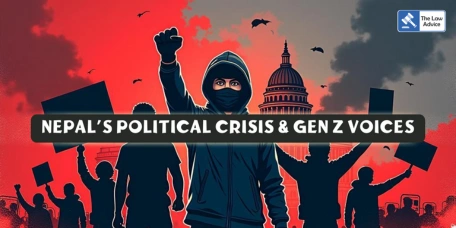Nepal's Political Crisis and Civil Unrest & Gen Z Protests
1. Current Political Crisis Overview
The political landscape in Nepal has undergone dramatic changes in September 2025, marked by widespread protests and significant civil unrest. The crisis has led to the resignation of Prime Minister KP Sharma Oli amid violent demonstrations and calls for systemic change .
Key Events Timeline
Date Event Impact
September 8, 2025 Initial protests begin Government social media ban triggered
demonstrations
September 8-10, 2025 Escalation of violence 30+ deaths, 1,000+ injuries reported
September 10, 2025 PM Oli's resignation Government collapse
September 11, 2025 Military deployment Nationwide curfew imposed
Casualties and Damage Assessment
Category Statistics
Deaths At least 31 confirmed
Injuries Over 1,600 people
Property Damage Parliament and Supreme Court buildings burned
Military Response Nationwide curfew and checkpoints established
2. Corruption Scandals and Investigations
The political crisis has exposed deep-rooted corruption within Nepal's governance structure. Several major scandals have come to light, undermining public trust in institutions.
Major Corruption Cases
Scandal Details Status
Patanjali Yogpeeth Land Scam Former PM Madhav Kumar Under investigation
Nepal and 92 others charged
Federal Affairs Bribery Case Minister Rajkumar Gupta resigned Ongoing investigation
over bribe allegations
Cooperative Fraud Billions embezzled affecting Under investigation
2+ million depositors
Systemic Issues
- Lack of accountability in police misconduct cases
- Political interference in corruption investigations
- Weak implementation of transitional justice law
- Widespread impunity for political elites
3. Nepotism and 'Nepo Kids' Phenomenon
The term 'nepo kids' has become central to the protest movement, highlighting the stark contrast between political elites and ordinary citizens.
Characteristics of the 'Nepo Kids' Issue
Aspect Description
Definition Children of politicians and bureaucrats
displaying wealth on social media
Public Reaction Widespread anger over lavish lifestyle displays
Social Media Impact Nepokids hashtag becoming a protest symbol
Youth Response Gen Z-led movement against privileged political class
4. Unemployment Statistics and Trends
Current Employment Situation
Year Unemployment Rate Change
2024 10.71% +0.08% from 2023
2023 10.63% -0.21% from 2022
2022 10.84% -1.35% from 2021
2021 12.19% -0.81% from 2020
Future Projections
- Expected rate by end of 2025: 10.00%
- 2026 projection: 9.80%
- 2027 projection: 10.00%
5. Violence and Civil Unrest Analysis
Impact of Recent Protests
Category Details
Casualties 34 deaths, 1,600+ injuries
Infrastructure Damage Government buildings burned, including Parliament
Military Response Nationwide curfew, checkpoints established
Political Outcome PM resignation, calls for interim government
Response Measures
- Army deployment for maintaining order
- Establishment of security checkpoints
- Implementation of curfew in Kathmandu Valley
- Invitation for dialogue with protest leaders
International Implications
The crisis has significant regional implications, particularly given Nepal's strategic position between India and China. Both nations are closely monitoring the situation, with potential shifts in regional influence at stake .
Regional Impact Assessment
Country Interest Potential Impact
India Strategic partnership Possible strengthening of ties
China Economic influence Potential recalibration of influence
Other South Asian nations Regional stability Monitoring for similar movements
Overview of Nepal's Current Crisis
Nepal's Powder Keg: Unraveling the Recent Unrest
In September 2025, Nepal erupted into violence that shocked the world. What started as protests against social media bans quickly escalated into a nationwide uprising against deep-rooted issues plaguing the country. As I delved into the data, it became clear that this wasn't just about social media - it was the culmination of years of frustration over corruption, nepotism, and unemployment.
The Spark That Lit the Fire
The government's decision to ban 26 social media platforms, including Facebook, Instagram, Twitter, TikTok, and YouTube, was the immediate trigger. For a country where 38% of the population uses the internet, primarily youth, this was seen as a direct attack on freedom of expression. But as we'll see, the underlying issues run much deeper.
The Corruption Conundrum
Corruption in Nepal isn't just a minor issue - it's a systemic problem that has eroded public trust in institutions. According to Transparency International's 2024 report, Nepal ranks 116th out of 180 countries in the Corruption Perceptions Index, making it one of the most corrupt nations in Asia.
High-Profile Corruption Cases
One of the most glaring examples of corruption is the $71 million scandal in the construction of an international airport. This case exemplifies how large-scale projects are often marred by corruption, leading to the misuse of public funds and substandard infrastructure.
The Commission for Investigation of Abuse of Authority (CIAA), Nepal's anti-corruption watchdog, reported over 2,500 corruption cases in 2024 alone. However, action was taken in only 10% of these cases, highlighting the ineffectiveness of anti-corruption measures.
The Rise of 'Nepo Kids'
Nepotism in Nepal's political landscape has given rise to the term "Nepo Kids" - children of politicians who enjoy luxurious lifestyles while the general population struggles with poverty. This stark contrast has fueled public anger and resentment.
A study revealed that 40% of Nepal's top 100 political positions are held by individuals with family members already in politics. This statistic underscores the extent of political dynasties in the country.
The Job Crisis
Youth unemployment in Nepal has reached a staggering 20.8%, pushing many young Nepalis to seek work abroad. According to the Ministry of Labor, 730,000 Nepalis left for foreign employment in 2024 alone, primarily to Gulf countries and Malaysia.
The Remittance Dependency
Remittances from foreign workers account for about 25% of Nepal's GDP, one of the highest percentages in the world. While this provides a crucial economic lifeline, it also highlights the lack of domestic opportunities and the brain drain affecting the country.

